Tyan Transport CX GC68B8036-LE Internal Hardware Overview
Behind the hard drives, we have a relatively “small” system. We are going to take a look at the system based on some of the interesting design decisions that Tyan made.
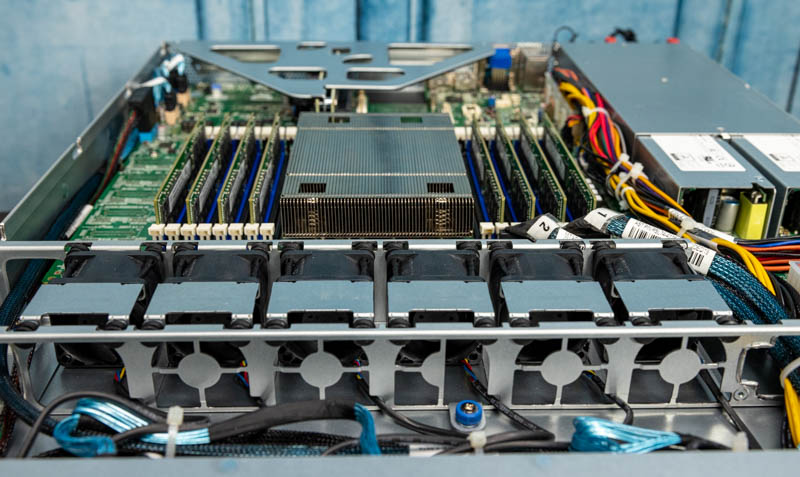
The storage backplane handles the power and data connections for all of the drives, along with the LED status indicators.
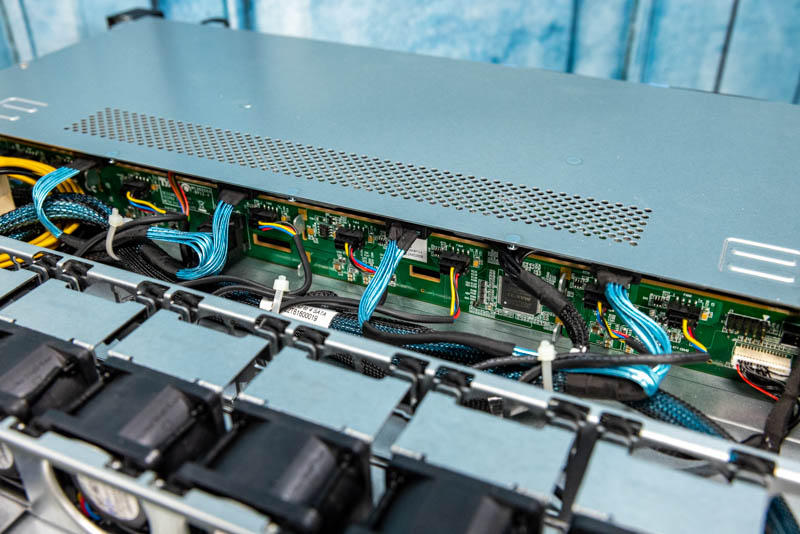
One interesting point is that the fans are not counter-rotating units. Instead, we have an array of single fans. These fans have little carriers which is an interesting design itself. The fans are not easily hot-swappable like we see standard on 2U servers. It is more common on 1U servers though to have standard fan headers. In this case, the fan headers are on the storage backplane, not the motherboard.
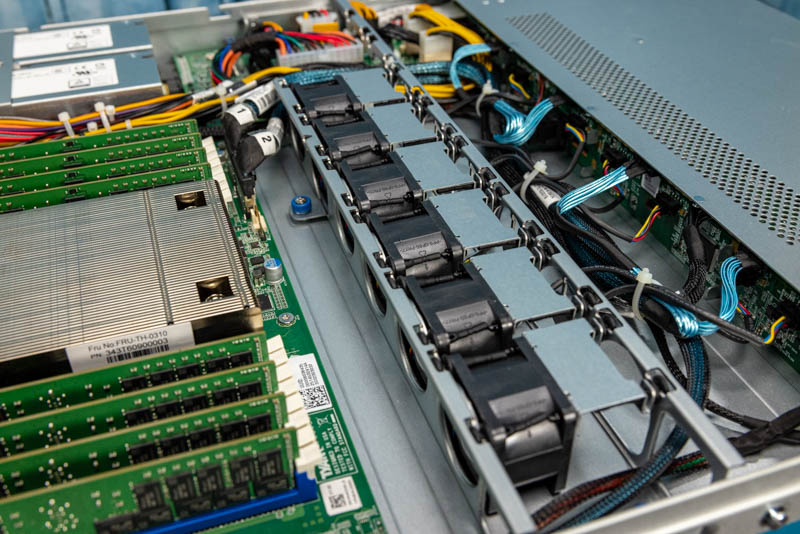
Another feature that we see on some motherboards but is not on this one is the power distribution. Instead, we have a dedicated Tyan power distribution board that handles the power supply redundancy and routing that power to the motherboard and the drive/ fan backplane.
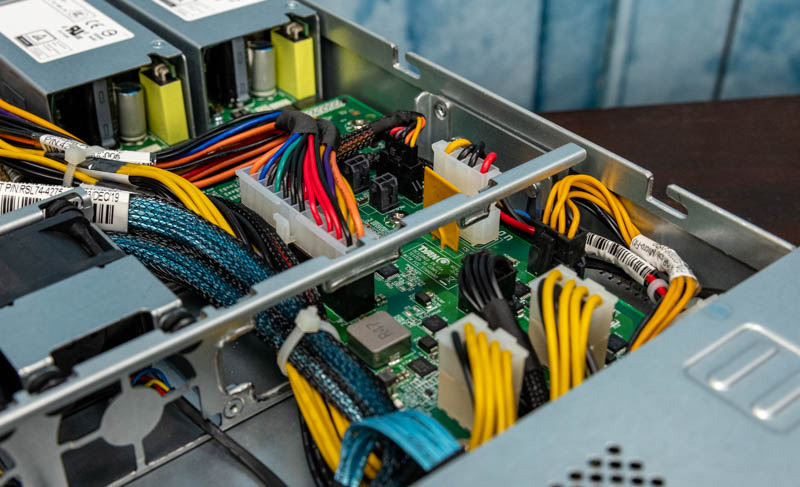
Using that power distribution board means the motherboard is a standard form factor which is the Tyan S8036 (note this is part of the product name.) The big feature of this motherboard is that it is specifically set up to be flexible, using standard ATX power inputs, but also designed for rackmount systems. For example, the CPU and memory are located in the middle of the motherboard, instead of along the top edge.
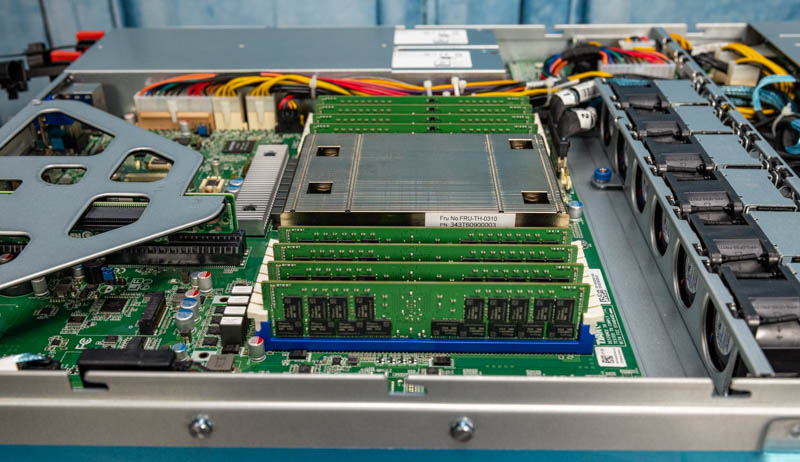
That placement allows for Tyan to fit a full 16x DIMM slots next to the AMD SP3 socket. Many standard form factor motherboards only have 8 DIMMs, one for each memory channel. This is a small detail, but with the ability to use 64-core CPUs, one may want 16GB/ core in which case using 16x 64GB is a lower cost than using 8x 128GB. This is just an example, but it is a nice feature that this layout provides to save additional costs.
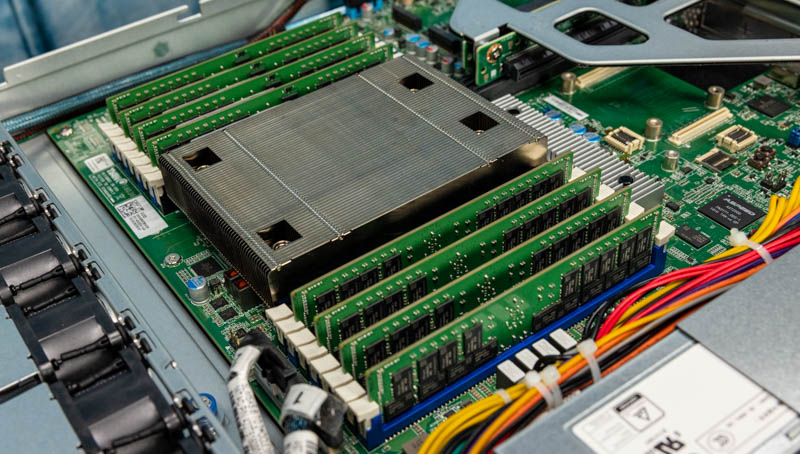
With the AMD SP3 socket, we have support for the AMD EPYC 7002 “Rome” and EPYC 7003 “Milan” series parts. These scale from 8-core parts up to the AMD EPYC 7713P 64-core part. AMD also supports up to 240W cTDP on the platform so, assuming the CPUs support it, one can use higher TDP levels and get more performance from a 225W TDP CPU just by increasing power consumption slightly.
Behind the CPUs are two M.2 SSD slots. Aside from the front SSD and HDD bays, one can also put two internal drives here for mirrored boot drives or similar applications. We like that Tyan is using tool-less retention here.
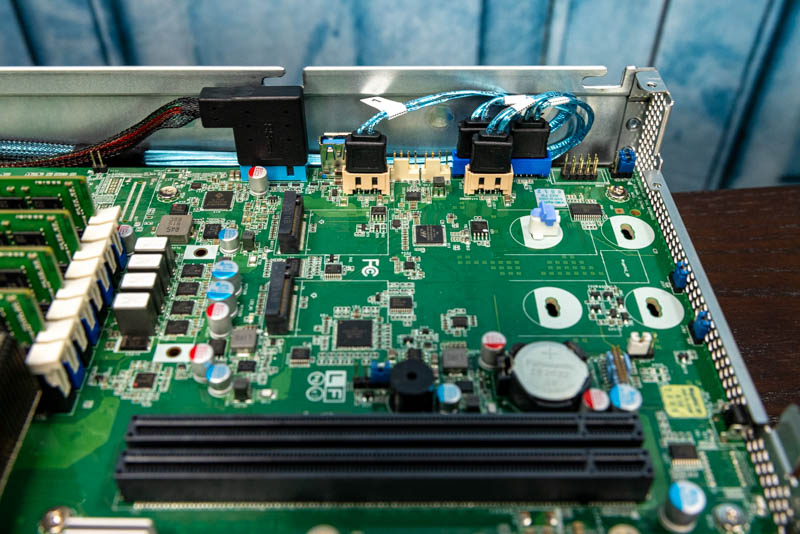
Just a quick note, we have a Marvell 9235 which is a very interesting option. Marvell is using it for SATA instead of using onboard AMD SATA connectivity. Since this platform is not a full PCIe configuration, this is an interesting choice.
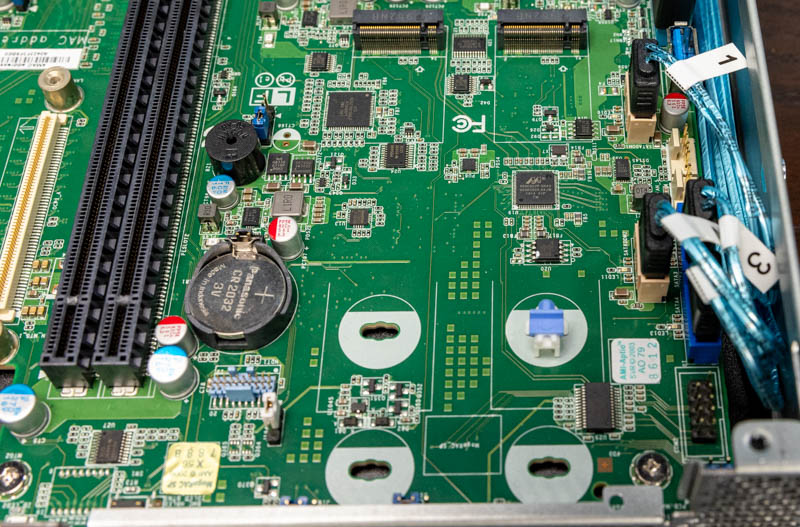
One can see that the SATA and front USB 3.0 cables terminate here. There is also an internal USB Type-A header.
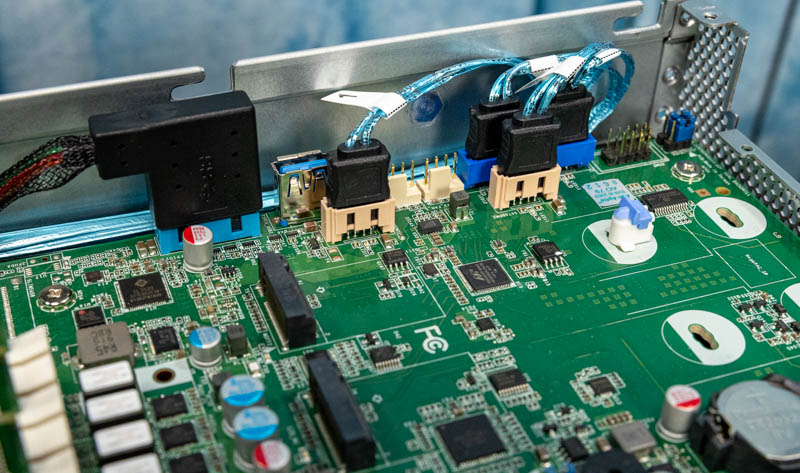
We already covered the expansion slots as part of the external overview. We wanted to show here the Broadcom BCM5720 NIC, internal microSD card, and the onboard power and reset buttons.
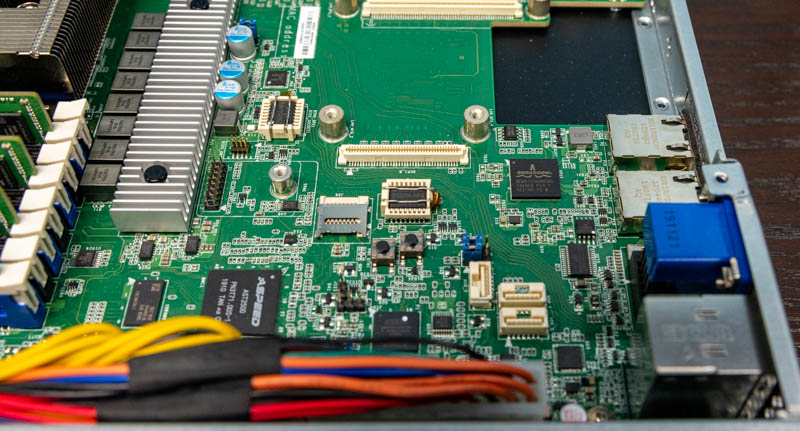
The system itself uses standard ATX power and CPU power inputs. The BMC is an ASPEED AST2500 BMC. You can learn more about BMCs in Explaining the Baseboard Management Controller or BMC in Servers.
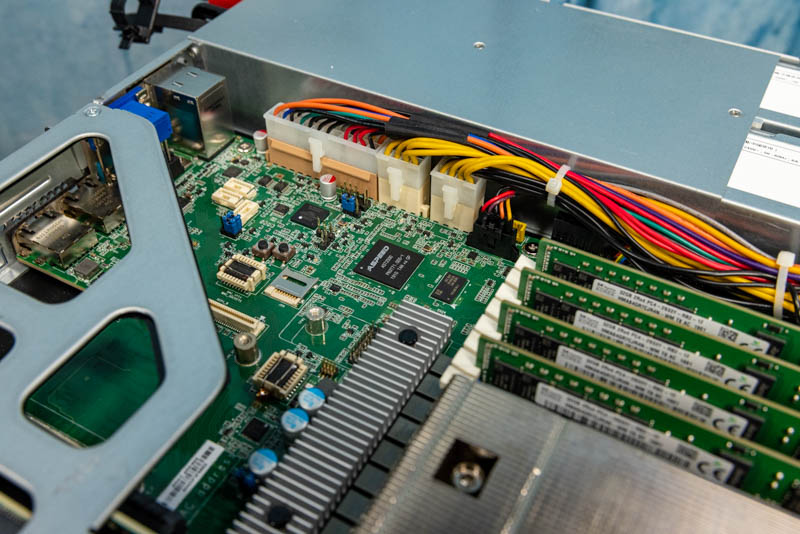
When we discuss cost optimizations, one of the major ones here we can see on the side of the system. Here we can see the de-populated side where there are PCIe connectors on the S8036 non-LE platforms. If you want to see an example of where these are populated, check out our Tyan Transport SX TS65A-B8036 2U 28-bay AMD EPYC Server Review.
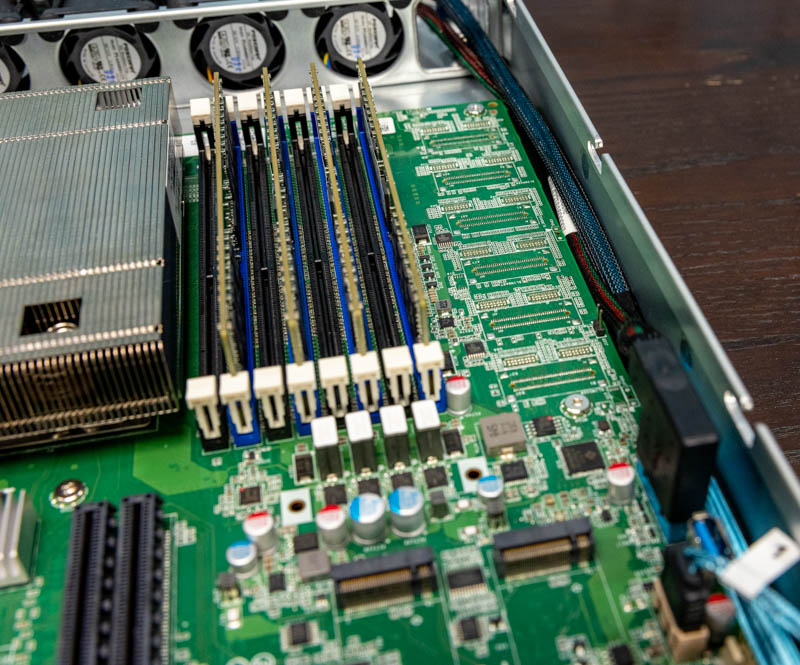
The cost optimizations here are designed for a simple reason. This platform aims to take on the low-cost segment of the market offering a single-socket solution to dual-socket Xeon platforms.
Next, we are going to take a look at the block diagram and management before getting to performance. We will then get to the power consumption, STH Server Spider, and our final words.




What a mouthful codename
Keep consolidating those E5 v4 nodes. Because of people like you, prices for for E5 v4 systems are finally beginning to drop to reasonable prices on the second hand market. My business is finally able to afford upgrading our E5 v2 servers.
Would love to see how these do in a switchless Azure Stack with the new OS.